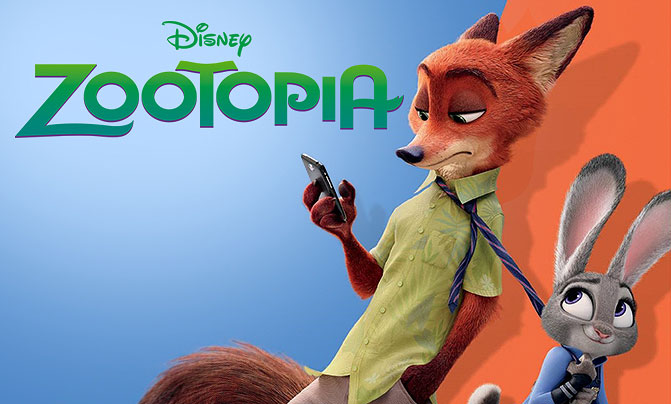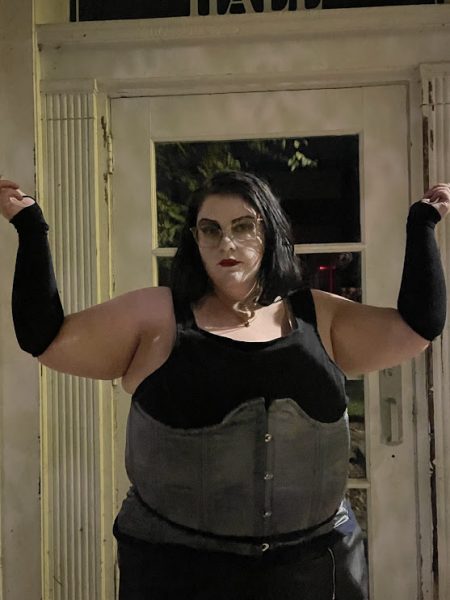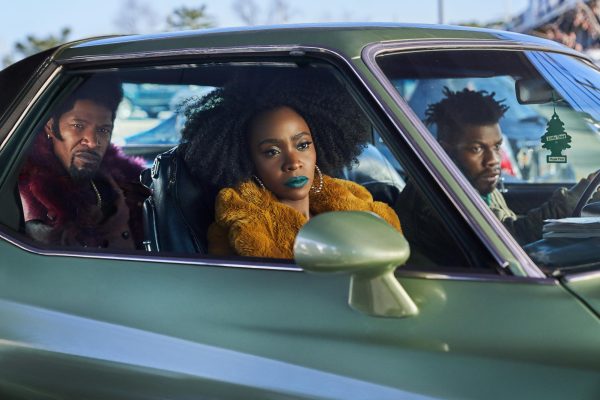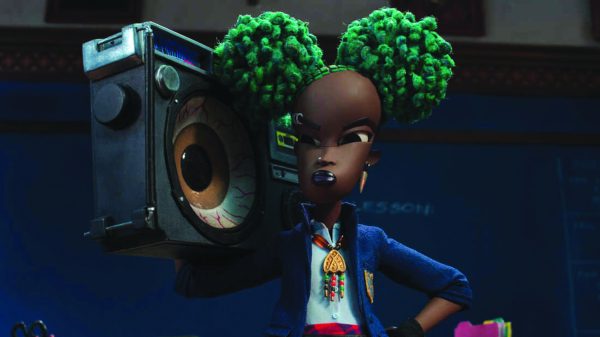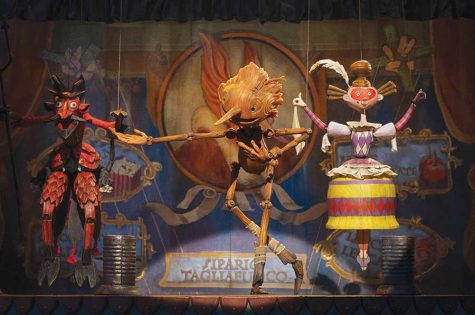A hoppin’ new tale from Disney
It’s a dog eat dog world, but in Disney’s newest animated feature, that dog would be arrested by a rabbit for the crime.
Directed by Rich Moore (“Wreck-It Ralph”) and Byron Howard (“Tangled,” “Bolt”), “Zootopia” is an hour and 48 minute film that explores themes of friendship, determination, and societal upheaval.
The story follows a rabbit, Judy Hopps (Ginnifer Goodwin), who chases her dream of becoming a police officer, despite her small stature, and ventures to the city of Zootopia. While there, she encounters the disreputable Nick Wilde (Jason Bateman), a con artist fox.
The animation style isn’t anything new as far as Disney is concerned, but the character design is impressive considering the film’s premise. I’ve found that anthropomorphic animal characters can go a few ways; some of them look mostly like animals with awkward human attributes tagged on, and others are modeled so closely to humans that they lose most of their animal aspects. “Zootopia” encounters neither of these troubles, instead finding a balance and maintaining each character’s clear animal identity within their anthropomorphic expression.
Cinematically, the film is beautiful. The animation utilizes color brilliantly: bright during sunny scenes, dark and ominous while in the jungle, and vibrant throughout. The cinematography offers sweeping shots of the city on Judy’s first arrival that, backed by Shakira’s peppy and optimistic new song “Try Everything,” provide a gorgeous sense of scale and movement.
The film manages to cross multiple genres, blending coming-of-age, comedy, and police procedure with the initial premise of highly evolved and intelligent animals. Although a bit gimmicky at times (Have you ever wanted to see a rabbit wear a Fitbit? Here’s your chance.), the world-building is deep, and I’m sure that there are plenty of hidden delights in the background that would require more than a single viewing to discover.
I found a certain fascination in the size differences between the animals. Unlike some other animated animal films, “Zootopia” stays surprisingly true to scale. Since the idea of the city is that all kinds of animals live together, tiny mice require the same considerations as enormous elephants. Although this results in certain implausibilities when you stop to think about it — for example, they somehow all drive their variously-sized vehicles on the same roads — it’s interesting to see how the animators contrasted the scale of so many objects, and is fun to watch in scenes such as the one where Judy ends up in the mini-city of the smaller rodents.
Although the beginning of the film is exactly as adorable and Disney-esque as I was expecting, I was unprepared for the darker, deeper turn that it took around the halfway point. Once the story’s main conflict comes into play, it becomes clear that the writers are looking to make a point about some of the less pleasant aspects of our own society that are currently causing contention and distress. While some people might find it heavy-handed, I thought it was a perfect way to highlight how incredibly hypocritical and horrible our society can be.
Despite its deeper themes, the movie is still very much a comedy. If one scene is sad, dark, or shocking, you can be sure that it won’t be long before Nick makes a snarky comment or the Chief of Police shows a surprising new side.
Animated films, at least in this country, have primarily been targeted at younger audiences. While “Zootopia” is rated PG, younger children would most likely miss a good half of the film’s content. Along with the subversive subtext, many of the jokes are meant to poke fun at modern-day society.
In an interview with The Hollywood News, Howard said, “A lot of the humor that we find as adults making the film comes from these parallels that we find with our own reality.” Referencing a scene in the movie where Judy and Nick go to the DMV and find it run entirely by sloths, he added, “It’s not necessarily something that a kid would get because they probably haven’t been to the DMV, but every adult on the planet gets it.”
While the humor shines in its disarmingly accurate parallels and dynamic characters, it falls slightly flat with the sheer number of references that it makes to other works. Some references are subtle — for example, the missing otter’s name of “Emmitt Otterton,” which makes a nod back at Jim Henson’s 1977 film, “Emmet Otter’s Jug-Band Christmas” — but then the Chief of Police says, “Life isn’t some cartoon musical where you sing a little song and all your insipid dreams magically come true. So let it go,” and I must resist the urge to drop my head into my hands and sigh.
Depending where you live, the film offers a slightly different experience. Not only is the name different, for copyright and other reasons — e.g. “Zootropolis” in the UK and “Zoomania” in Germany — different regional animals were chosen to replace the US’s moose news anchor: a giant panda in China, a jaguar in Brazil, and a koala in Australia and New Zealand, to list a few.
“Zootopia” has many enjoyable aspects. If you like anthropomorphic animals, this film is for you. If you like lighthearted and witty comedies, this film is sure to give you a laugh. If you like films with apt analogies for societal issues, Zootopia’s struggle with the dichotomy between predator and prey will certainly give you something to think about. If you like films of building friendships and overcoming struggles, Judy Hopps and Nick Wilde will tug on all of your heartstrings. And if, for whatever reason, you’ve always wanted to see Shakira as a leggy creature of the savanna, then Gazelle’s performances will probably not disappoint.


